Hi Tom. I used to use storyboards for all projects but am now finding that providing visual mockups of the design intent and general flow is enough. I write content in Word and the client reviews/edits the Word document. Doing it this way means the client remains focused on what they know best… the content… and I can focus on what I know best… design and delivery of interactive content. The client then reviews iterations functional prototypes in Review which is tracked and we work together to tweak. I find this approach is efficient for the client and allows more creative freedom at my end.
Do You Storyboard Your E-Learning Courses?
October 1st, 2019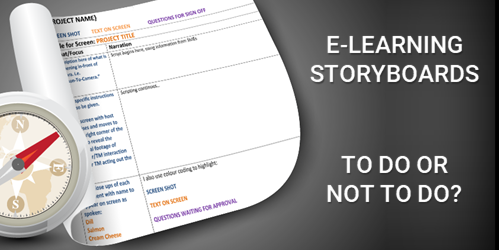
A couple of weeks ago, David posted a challenge where community members were asked to share their storyboard templates. As you can see, there were quite a few different storyboard templates shared for downloads. There are also additional free storyboards in the community downloads section.
What I found interesting was some of the conversation about storyboards. There are quite a few who don’t use formal storyboards. Instead they just build everything from inside their authoring tool.
Why There’s No Need for a Storyboard
Years ago when I first started working with e-learning, storyboards were really important. That’s mostly because it wasn’t just me working on the course.
The storyboard was how we determined how to construct the screen layouts and user interface. We determined where things were placed, how they animated, and what supporting media was required. Because more than one person worked on the course, the storyboard was really critical to communicate on the project design.
On top of that, working with customers and getting them to “see” what we were building was a challenge because it wasn’t as easy and quick to prototype the courses back then. Thus, we used the storyboard to walk through the course design with out clients.
This helped them understand what we were going to produce and get their agreement. It was also an easy way to show what other assets were required and the extra production required to deliver the course.
Rapid E-Learning Changed Things
A lot of this changed when we shifted from custom development in Flash and Authorware to Articulate Studio and PowerPoint. PowerPoint let me add all of the assets (or placeholders) and build animations quickly. Because I could prototype quickly in PowerPoint, I found I spent a lot less time working with formal storyboards. I suspect that’s common for many of you as well.
And it’s only easier with Storyline because there’s so much more interactive capability and one could build a quick prototype faster than it probably takes to complete a formal storyboard.
If you’re a team of one doing most of the production yourself, then a formal storyboard is less likely. Essentially, the prototype course really is a storyboard. It’s just in the authoring tool and not a separate document.
When a Storyboard Makes Sense
Throwing a bunch of slides and quiz together and calling it a course is one thing. In that world, what does a storyboard solve? However, when you start to build more complex learning experiences, you need to be more intentional about what you design. That requires a lot more planning. And most likely there’s a lot more media production.
In those cases, working with a storyboard helps you properly plan the course structure as well as the required content and media.
Also, when working with a clients (especially paying clients) it’s important to show them you’re organized. And a storyboard helps you walk through the project requirements before spending a lot of time prototyping and working on more time-consuming interactions.
There’s obviously a lot more that can be said about storyboarding. I find that people who’ve been in the industry a while, use storyboards more often than not. But people who’ve joined the industry over the past three years or so, don’t rely on them as much. Which makes sense, because the tools are so much easier to use.
I’m curious. Do you storyboard your courses? If so, how are you doing it? If not, why not?
Events
- Everyday. Check out the weekly training webinars to learn more about Rise, Storyline, and instructional design.
Free E-Learning Resources
 |
 |
 |
|
Want to learn more? Check out these articles and free resources in the community. |
Here’s a great job board for e-learning, instructional design, and training jobs |
Participate in the weekly e-learning challenges to sharpen your skills |
 |
 |
 |
|
Get your free PowerPoint templates and free graphics & stock images. |
Lots of cool e-learning examples to check out and find inspiration. |
Getting Started? This e-learning 101 series and the free e-books will help. |
8 responses to “Do You Storyboard Your E-Learning Courses?”
I rarely used storyboards. I found that in too many cases, the SME would have very little edits to the storyboard because they had a hard time visualizing what the end product would actually look like from a static document(no matter how many visual mockups I included). Once the course was developed, the SMEs would then have lots of edits (that could have been submitted at the storyboard phase). Instead, I work with the SME to get an outline/sequence of content and use an iterative process and show sections to the SME as they are being developed. With the time saved by not creating a detailed storyboard, the project gets done faster. It helps, of course, to have a trusted relationship/reputation with SMEs.
It depends what do you called as a storyboard.
Generally if the course created involving someone else like SME or a client.
Any communication document is already a storyboard.
but if we want to get a very detailed paperwork completed with signature like a contract or a blueprint, it is probably not practical or avoided by many parties.
I rarely use actual storyboards. I work within the department I am creating materials for. Typically, I am provided with a policy & procedure that needs to be made into a lesson and I have complete freedom on how the lesson looks and is delivered to the learner.
Instead I write the narration for each slide in OneNote and have the SME’s verify that my translation of the P&P is correct. Most of what is done in the story board process happens for me in my head as I write the narration and I may or may not make notes in the margins of the OneNote. While the SME is reviewing my narration first draft, I will start laying out the slides in storyline in Storyline.
As the build of the lesson progresses, I will have the SME & requestor of the project review the lesson in Articulate Review so they can provide feedback and edits to the lesson content.
This has worked well for me, as I am a team of one and have complete freedom in what I create. If I worked on a team where collaboration was necessary, I could see the need for creating storyboards for projects.
If I’m using Rise and I’m doing the development I do not do a separate storyboard – I create it right in Rise. I had one person tell me this wouldn’t work if you needed to translate the text, to which I replied – export a pdf, convert to Word and you have your real-time script/storyboard to give to a translater. Yes you have to redo it with the script, but that’s not a big deal.
I do often create an overall Instructional Design plan that includes overall treatment, behavioural learning objectives, and design. But then it’s straight to Rise. Clients love it because they don’t have to review long boring documents that explain an interaction; instead they get to interact.
With Storyline I had done it both ways, but the script/storyboard, if done, has way less detail than we would have included years ago. I expect the course authors (whether me or a contractor) to continue a conistent UX etc.
I absolutely love this new freedom, particularly with Rise. I can’t imagine going back to the old way when we used to walk 15 miles in snow just to get to the office, then we would take out our lead pencils and write our scripts and send them off by fax, months before we would even see a graphic. Those days were so gray 🙂
I agree with you, Tom. I have been an instructional designer for 30 years and doing e-learning for about 15. Sometimes it makes sense to storyboard just like it may make sense to do a needs analysis and a detailed design. Each client and project is different. If it makese sense to skip a phase or task, skip it. I use Articulate 360 and often do the storyboard with that tool (usually Storyline 360) because it is faster. I used to typcially do them first in Powerpoint but now that Review 360 exists and is easy for me and my reviewers to use, why add another step? However you design and develop, a critical piece is communicating with the client and other stakeholders. Have regular reviews to avoid going down a path the client doesn’t want. It is our job to be efficient to save time and money. AND give the client what they want and hopefully something they think is fantastic.
I don’t use storyboards–I’ve never figured out how to use them in a way that is helpful for me. Describing interactions and/or animations I want to take place takes longer than just doing them. Copying and pasting from a Word doc into Storyline drives me nuts. Even importing a PowerPoint into Storyline can turn out to be problematic.
I start with a blank Storyline template, and go on developing my prototype (or first draft ) from there. Unless a client requires me to use a specific storyboard document. In that case, I generally end up reverse-engineering the project in order to comply. 🙂
While completing grad school, I only used a storyboard once in my education in Instructional Design. As a previous classroom teacher, I used “stroyboard” to do action lesson planning, but otherwise, storyboards weren’t used; as the authoring tools usually allow me to make quicker higher-fidelity prototypes that can act as a storyboard while giving the client a sense of the construction and interaction.
I recently started working at a corporate company developing corporate training on multiple platforms including e-learning, blended and ILT. However, we are currently going through discussion on creating a general template for story boarding, and I don’t know how effective it will be. The idea is to put all the possible information, linked files, script, slide layout, and more all on the layout. I feel this will become cumbersome, and feel that the utilization of either a quick mock-up or word doc outline would suffice enough for the development stages, unless it is a very lengthy or detailed development where a formal storyboard seems logical and worth the effort and work you put into it.
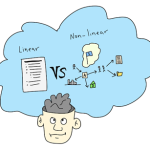

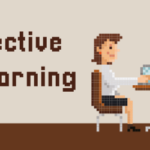
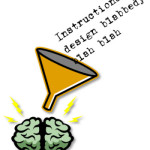
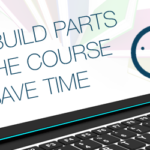
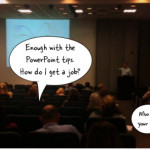



0
comments